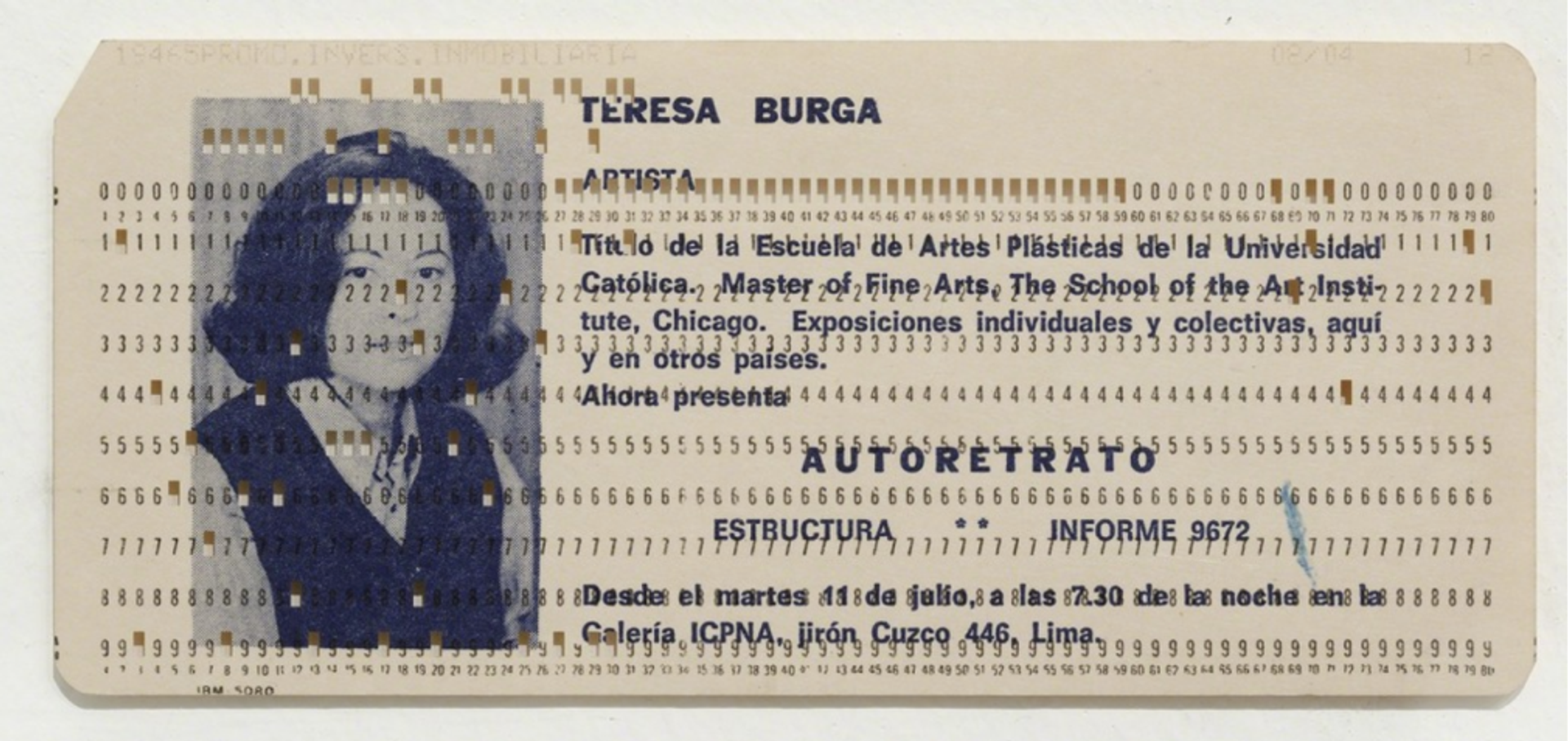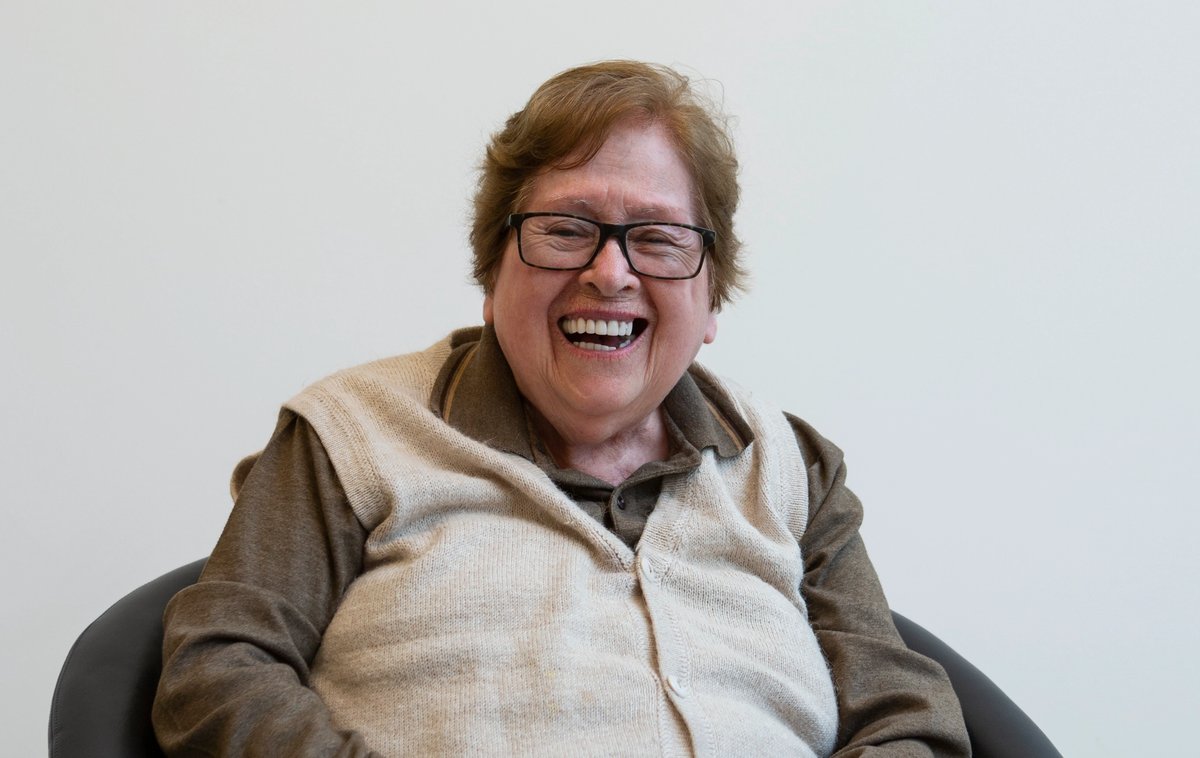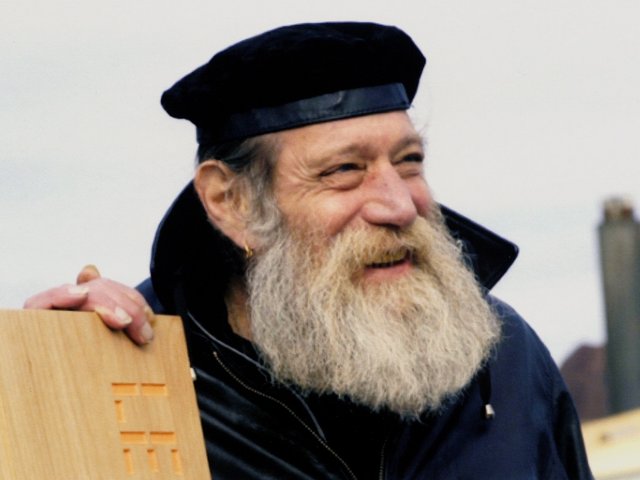Teresa Burga, a trailblazer in Latin American Conceptualism, has died, aged 86. The Ministry of Culture of Peru, where she lived and worked for most of her life, announced her death on Twitter on Thursday, and it has been confirmed by her New York gallery Alexander Gray Associates as well as her Berlin gallery, Galerie Barbara Thumm.
Burga was born in 1935 in the port city of Iquitos, but moved as a child to Lima with her parents. After initially training as an architect, in 1966 she became one of six Lima-based artists who formed Grupo Arte Nuevo, a collective that wanted to propel the contemporary movements of Pop, Minimalism, Op Art, and happenings in Peru. In 1968, she travelled to the US on a Fulbright scholarship where she studied at the Art Institute of Chicago for two years, receiving her MFA in 1970. Throughout this time, Burga further pushed the conceptual elements of her work and questioned conventional notions of artistic authorship by creating objects that could be replicated by anyone through detailed schematics that she made. In 1971, she returned to Peru, which was then under the authoritarian rule of Juan Velasco Alvarado. Living under a regime unfavorable to conceptual art, Burga procured a job designing solutions to enhance administrative efficiency in digital information systems for Peru’s General Customs Office, a position she held for 30 years, and during which her artistic career drifted into obscurity.
"She was still making art while working in customs," says Alex Santana, an art historian who worked closely with Burga for the artist’s 2019 exhibition at the New York gallery Alexander Gray Associates. “Of course she wasn't producing large-scale works then, but the curator Miguel López wrote that her time working in customs was almost an extension of her conceptual practice, because so much of her work prior to that was about systems, bureaucracies, regulations, and how those imposed artificial systems can affect bodies, space, and the ways that people can perceive themselves and others in society." The exhibition at Alexander Gray came soon after the gallery started representing her, and was only her second solo show in the US, following a 2017 museum survey at the Sculpture Center.
Like many women artists of her generation, while recognition of her work came late, it quickly grew. In 2006, when Burga was 70 years old, two young Peruivian curators, Miguel López and Emilio Tarazona, knocked on her door and asked if they could discuss her work. “I simply didn’t believe it,” Burga said in a interview with López for the arts journal Manifesta in 2014. “I finally accepted thinking ‘OK, let them come in and let’s see what happens,’ but I was truly convinced that there was nothing to be recovered.”

Teresa Burga, Autorretrato (Self-portrait), 1972, silkscreen on a Hollerith card © Teresa Burga/Artists Rights Society (ARS), New York. Courtesy Alexander Gray Associates, New York, and Galerie Barbara Thumm, Berlin
That meeting, however, led to a 2010 solo exhibition at the Instituto Cultural Peruano Norteamericano in Lima—her first solo show in 30 years—and it was quickly followed by over a dozen exhibitions around the world in the decade since. Her inclusion in Radical Women: Latin American Art, 1960-1985, a popular travelling group show first organised in 2017 by the Hammer Museum in Los Angeles as part of the Getty-funded Pacific Standard Time festival, also spurred interest for her work in the US.
With a massive resurgence in critical attention, Burga returned to working across a number of mediums, including sculpture, drawing, and installation, emphasising and prizing the conceptual framework of each individual project above all else. Her early investigations into societal roles in Peru continued to resonate and were included in her 2017 show at Sculpture Center in New York some 50 years after their creation, where had equal footing alongside newer works.
“The thread through a lot of her work is the strong and potent force of chance, and how much of life is chance," Santana says. "She illuminated the ways in which hierarchies, bureaucratic systems and categories that we place on ourselves are all artificial, and life is really just chance.





